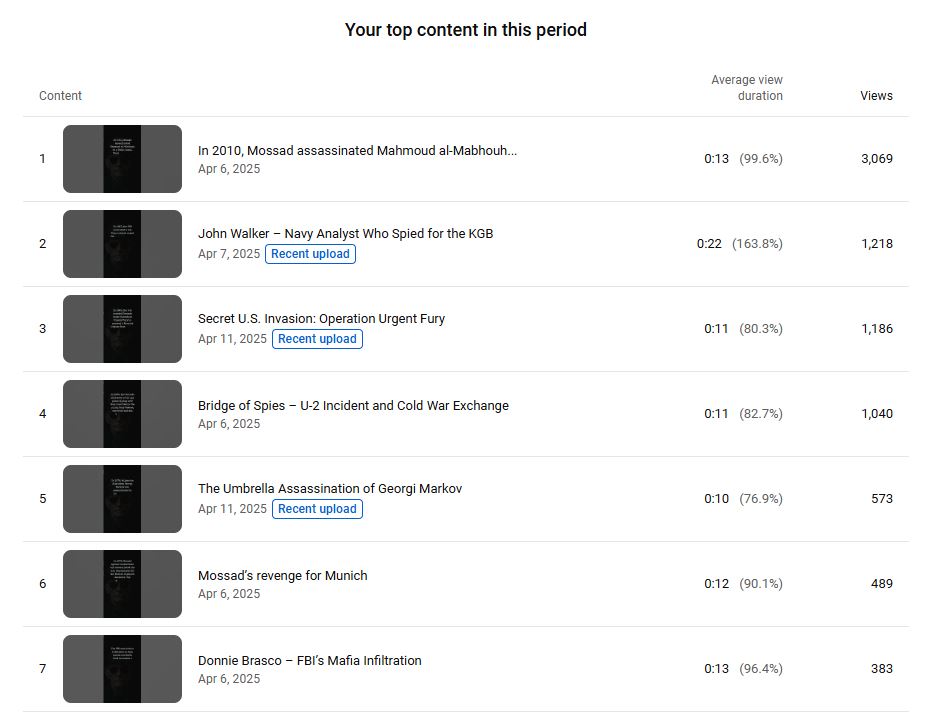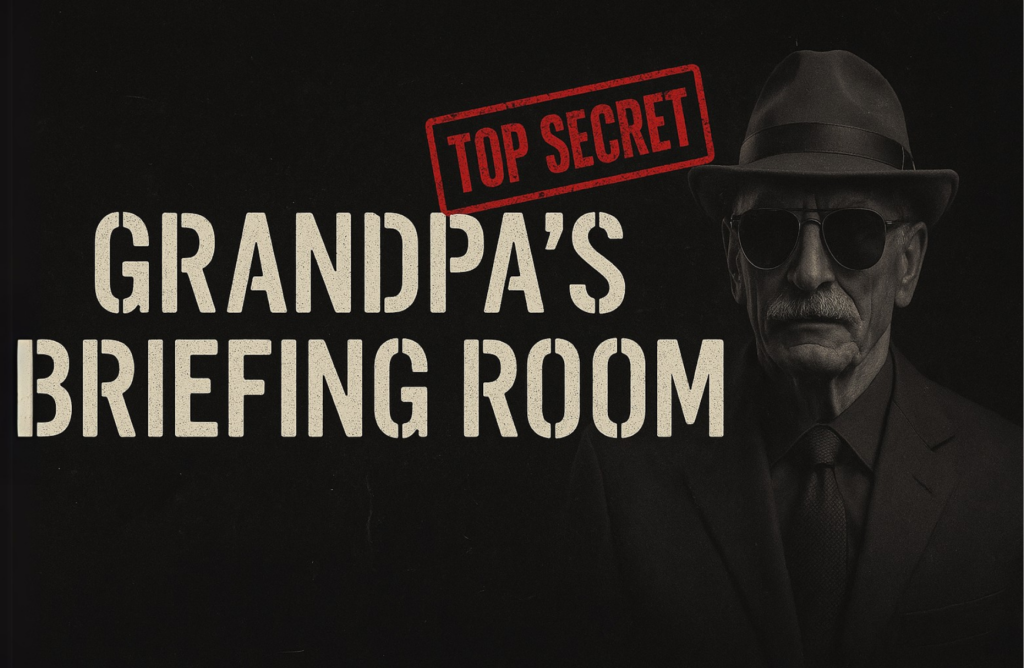This post breaks down what actually happened after publishing 24 Shorts in the first 7 days — no hype, just raw numbers and early signals from YouTube.
📊 7-Day Stats After 24 Videos
🗓️ Period: April 6–13, 2025
📈 Shorts published: 24
📺 Total views: 10,123
⏱️ Total watch time: 13.8 hours
👥 Subscribers gained: +3
🎯 Videos with 1,000+ views: 4
📉 Videos with <10 views: 6
📊 Average view duration: 14s (102.2% viewed)

Notable Performers
All had high watch percentages (80–160%) and short durations. Some even looped well beyond their length — a possible factor in being surfaced.

The Flip Side: Videos That Didn’t Get Picked Up
Several Shorts, published with the same structure, theme and quality, ended up with under 10 views. These were uploaded within the same 7-day window, using identical formatting and tone — suggesting that YouTube’s algorithm simply didn’t surface them to viewers (at least not yet).
There’s no obvious reason why some were pushed and others weren’t. This reinforces the idea that reach is less about content quality in the early phase, and more about timing, randomness, or internal testing signals.
So, What’s Actually Happening?
✅ The algorithm is responsive, but selective
Some videos clearly got surfaced and gained thousands of views, while others stagnated.
✅ Retention rate matters
Most successful Shorts had 90–160% view duration. Looping helps.
✅ The more you publish, the better your chances
Some videos get hundreds or thousands of views, others — even if they’re just as good — get almost nothing. It all depends on whether YouTube decides to show them to people. Publishing more simply gives the algorithm more chances to pick something up.
That seems to be the case in the early phase of a channel — things might work differently later on.
⚠️ Zero correlation between video “effort” and reach
Some of the best-written stories got 3 views. Others blew up within hours.
⚠️ No feedback loop yet
No real comments, likes, or interaction — engagement is almost nonexistent, which is expected in this setup.
Why I’m Doing This
This is one of many small experiments under the Tireless Grandpa umbrella — none of them overly ambitious, but all rooted in testing what’s possible with minimal resources, maximum focus, and a healthy dose of automation. The idea was simple: could a faceless, voice-free, AI-powered Shorts channel gain any traction on its own?
Introducing: Grandpa’s Briefing Room

The channel revolves around a fictional character — a Cold War-era intelligence officer briefing viewers on real secret operations. Each video is ~15 seconds long, using text overlays and visuals to deliver quick-fire stories from the world of spies, sabotage, and black ops.
🔗 Watch the channel here — or browse other Tireless Grandpa experiments running in parallel.
The Setup
Tools used:
- ChatGPT Plus – for generating scripts and titles
- Canva Pro – for visual templates and batch video creation (paid)
- YouTube Studio – for auto-scheduling uploads, usually 3 per day (with a few extra videos published over the weekend)
Process:
- Scripts are generated and lightly edited
- Canva templates are used to format videos
- Everything is scheduled automatically
- No paid promotion, no cross-posting, no engagement tricks — just upload and observe.
What I’m Tracking
This is a no-promotion test. I’m tracking:
- View count over time
- Retention rate and watch duration
- How many videos get picked up by the algorithm
- Whether themes or formats affect traction
I’m not optimizing or changing anything mid-way — the idea is to publish 100 Shorts first, then analyze what worked and what didn’t.

What’s Next
For now, I’m not changing a thing. No title experiments, no split-testing, no tweaking thumbnails or pacing. Just sticking to the plan and watching what happens.
The plan is still: 100 Shorts in 30 days, then a detailed post-mortem.
I’ll keep sharing progress and stats here as the project unfolds.
Faceless, but not soulless — just one persistent human using AI to turn ideas into something real. One blog post at a time.




